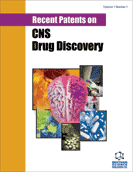Abstract
Alzheimers disease (AD) is a heterogeneous and progressive neurodegenerative disorder. The recent Metal Hypothesis states that the interaction of Amyloid beta (Aβ, the main constituent of senile plaques) with transition metals is at the basis of AD neurodegeneration. This hypothesis is based on in vitro studies demonstrating that metals (copper, zinc) accelerate the aggregation and precipitation into plaques of Aβ, ultimately leading to synaptic dysfunction and accelerated amyloidogenesis. Recently, we have identified in AD patients a specific ‘copper disease’ marker, consisting in a serumincrease of copper not bound to ceruloplasmin, named ‘free’ copper. Several patents have been issued in the recent years and many clinical trials have been attempted in search of an anti-metal effect counteracting AD progression. Some of them have delivered very encouraging results. These anti-metal agents, however, have also shown adverse events. This work is aimed at reviewing ‘old’ and ‘new’ attitudes towards the use of anti-copper complexing agents or biological molecules which induce or maintain a state of copper malabsorption, such as zinc compounds, paying special attention to how such a rethinking of ‘old’ clinical trials might trace new routes in planning ‘modern’ ones.
Keywords: Serum copper, ceruloplasmin, Alzheimer's disease, anti-copper agents, metal chelators, metal complexing agents, ‘free’ copper, zinc therapy
 6
6





















